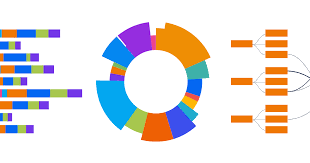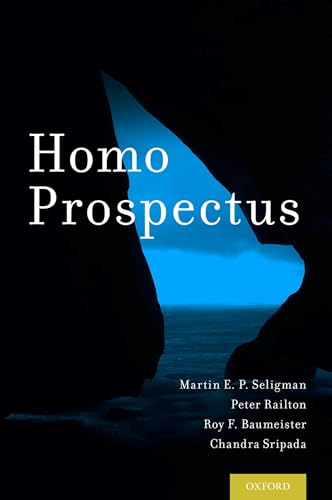
Some folks get curious about MyScore. They ask where did we come up with the 5C’s as a framework? Are they based on any other research or proven SEL system. Great question. We could write a book.
The 5 Cs to refresh our memories are
CONFIDENCE
CURIOSITY
COLLABORATION
COURAGE
CAREER-FUTURE FOCUS
Yes they are based on a solid tested theoretical foundation. But let’s put them into context first. What other categories of SEL are in the same field? When we invented the 5C’s back in 2017, what else was out there?
__________________________________________________________________________________
CASEL FRAMEWORK
The leading organization CASEL, that has pioneered so much amazing work in the field, has five categories also. They are
Self-awareness,
Self-management,
Social awareness,
Relationship skills,
Responsible decision-making.
In some ways, these 5 are similar to the 5C’s and in other ways different. Where do they connect?
It is easy to see that C1 Confidence can easily map to Self Awareness, and C3 COLLABORATION is about relationship skills and social awareness. Self Management and Decision-Making could be part of C4 Courage, when one most needs to manage self in hard times. It seems there is a lot of cross-over.
self-awareness,……C1 : CONFIDENCE….How confident are you?
self-management,…..C4: COURAGE and C3 COLLABORATION…how well do you get along with others?
social awareness,….C3 : COLLABORATION…how well do you get along with others?
relationship skills,….C3: COLLABORATION…how well do you get along with others?
responsible decision-making… C4: COURAGE…what do you do when things get hard?
_______________________________________________________________________________________
 ADDING HOPE
ADDING HOPE
However, what CASEL categories do not explicitly include is what we are learning from the latest research on ‘future perspectiving,’ or what Martin Seligman, the pioneer of Positive Psychology, calls, “Homo Prospectus.”
In Seligman’s latest book, researchers claim that “anticipating and evaluating future possibilities for the guidance of thought and action is the cornerstone of human success.” CASEL does not have such a category. Seligman and others believe that a growth perspective must include a future dynamic. It is only in the context of that future that one sees as possible, that one can endure, make good decisions, find good friends, and be open to learning. That makes sense, because that is why we save for our kids college or pay down the mortgage.
In some ways, C5 HOPE is the overriding context of all the others. If there is a future worth living into, there is a present worth living and learning in, and a past worth learning from. If there is no future, self-management and social awareness and responsible decision-making make no sense at all.
____________________________________________________________________________________
 GALLUP POLL- ADDING HOPE
GALLUP POLL- ADDING HOPE
Another compelling reason for HOPE, C5 was a previous Gallup poll in 2013-2014 that surveyed 18,000 students from the same MCPS population that we are serving. One of their lead questions was about HOPE. Using C5 allows our samples to lend a 10 year comparison to our data.
___________________________________________________________________________________
NARRATIVE THEORY OF CHANGE
There are other solid reasons for our 5C structure that come from the Narrative Theory of Change on which it is built, If one views human existence as becoming more meaningful and memorable in a story, and that story acts as the associative architecture of the brain, that informs how we designed MyScore. At Storywise, we believe that ” we story our lives into meaning and it is that meaning that creates both its value and enduring significance.” In other words, story is essential, not just to tell but to live. In fact, it is more essential to live it, or live to tell the tale, rather than the opposite. Telling in order to live.
From this narrative point of view, the elements of any story are three-fold: Character, Plot and Audience. (CPA)These elements are essential to successful story formation. If there is no audience,( C3) or nothing new is happening from which to learn, ( no plot=boring) (C2) or it is happening but going nowhere (C-5) or there is no challenge to grow from (C-4) or if the character lacks any sense of identity, C-1, then the story falls apart. Or for young people still in their formative stages, lacking CAP, they are never able to form a sustained story in the first place. Let’s take a closer look at this idea of Story Design and the 5C.s The three pillars of story are
Character
Plot
Audience
Can we map this Trinity on to the 5C’s of MyScore?____________________________________________________________________________________
 CAP AND MYSCORE
CAP AND MYSCORE
Character maps onto C1 Confidence and CASEL’s Self-Awareness- because it addresses the key identity question- who is the person in the story? What is her or his sense of self? Are they growing more confident to appropriate and be responsible for the experiences they are having? No Character, no story, or if there is a story, the owner does not inhabit it as an agent. Someone low in confidence is often living inside someone else’s story about them.
Plot is about what happens and then, what happens next. Therefore, C5 Hope is essential for the story to have the energy to drive it forward. In that respect, CASEL’s pillars can sound rather static or snapshots of a life, rather than a movie of a life. Note the only verbal form in CASEL is “making” as in Decision-making. The others are all descriptives of states. Social Awareness, Self Management. One theory seems to be about being and MyScore is about becoming.
Plot as classically understood in the Hero’s Journey is engaging because it is dramatic and made suspenseful by what is at stake and what is being struggled for or against. The challenges are what reveal the deeper motivation of the character, their core, their courage. Hence C4 is a critical element of story. What do you do when things get hard. How do you show up when it counts?
Lastly, Plot is driven forward by surprise, the unknown, mystery, because what comes next perhaps is not seen before. Humans, when they are young, are built to be exquisite learning machines. Hence C2 is not just about success at school but success at building and living out a human story. If you are not learning, you are not moving ahead. In a way, you are not living.
Audience is two-fold, being the audience you bring to yourself and how you feel about that on the inside. C1 asks that. How confident are you? It is asking, what kind of audience are you to your own actions and feelings? But the outside audience can matter just as much.
Character is not a monologue but a dialogue. Who are you with? Who else is on the journey? Social Awareness and Relational skills are what CASEL calls them. But they are even larger than that. Audiences amplify the plot and accentuate the character traits that grab attention. The saying is, if the tree falls in the forest and no one hears it, does it fall? We say, if there is no audience, there is no story. And if there is no story, there is no character. Or they are characters from a Becket play- forever waiting for nothing to happen.
_______________________________________________________________________________________
SUMMING UP

From a narrative perspective, the human story can be summarized into two simple but core things. Me and my Future.
For MyScore, that is the first question C1 and the last question C5, and the rest is what happens in between.
It is first of all about us as characters acting into our own story C1 and and in the end, it is about our relationship to our future, and the quality of our hope. C5. Questions 1 and 5 set the parameters.
C2, 3, and 4 are what happen in between, to either create or dilute Character C1 and either create or destroy Hope for a future C-5.
The 3 elements in between, are core to that journey, as elemental to Ulysses in the Odyssey or Moses in the exodus, stranded between the desert and the promised land. So too on our own journey. we need to ask
1.Who is going with us? C3,
2. What we will be able to learn? C2
3. How we will handle the inevitable challenges and heartaches? C4.
There are a lot more elements we could select. But for the simplicity of the instrument, this is enough for a story. It is enough to know how a person is engaged in the process of learning from their own lives. In narrative terms, how invested are they in creating a livable and durable story for themselves?
MyScore aims to be so basic and simple that it can be assessing from the inside out, from the Point of View (POV) of the character, first person rather than an omniscient narrator. It aims to give us an inside view of who the student is with, what she is hoping for, and what challenges she faces.
The MyScore is not gathering content however. Life is a verb, not a noun, so we want to strengthen their learning, their companioning, their encouraging, their hoping, and their self believing. We think of growth as a muscle, not a curriculum. The fact you failed the History exam is not half as important as to how you handle the failure.
MyScore and its 5C’s are drawn from what we believe are the essence of good story-forming and good storytelling. The narrative assumption underlying all of this is that if a person’s story is not working, there is less chance of their life working. MyScore gives us a chance to be a young person’ Co- creators and Co- narrators.

